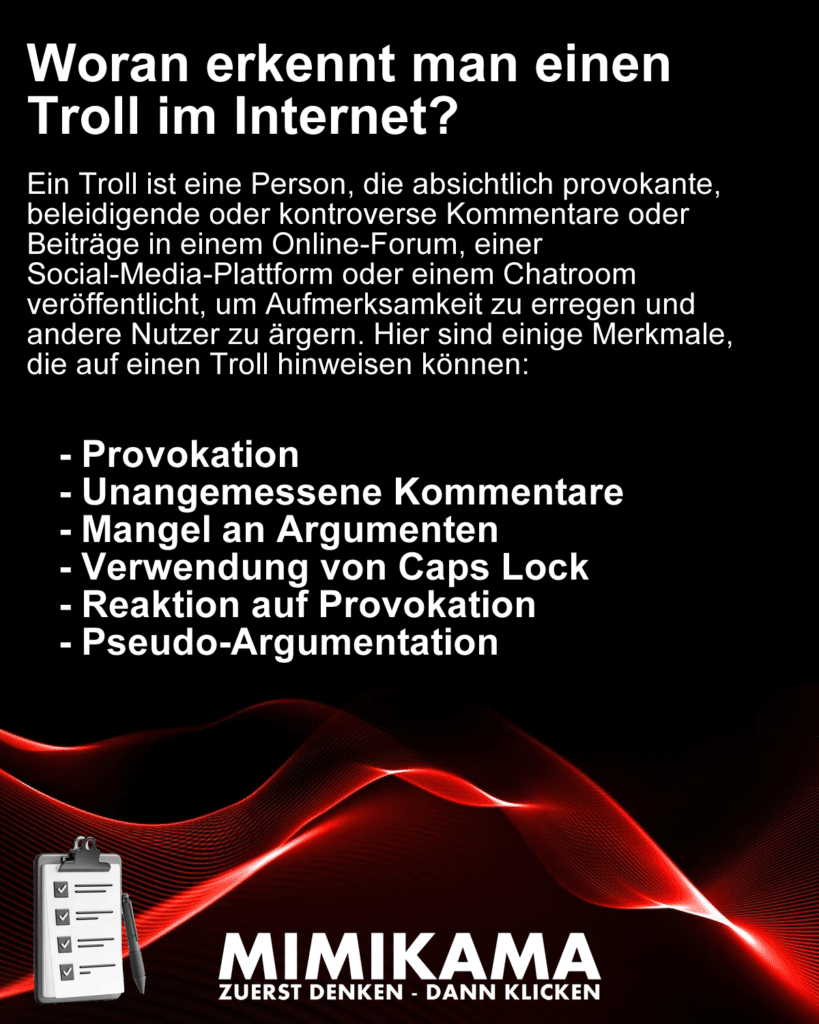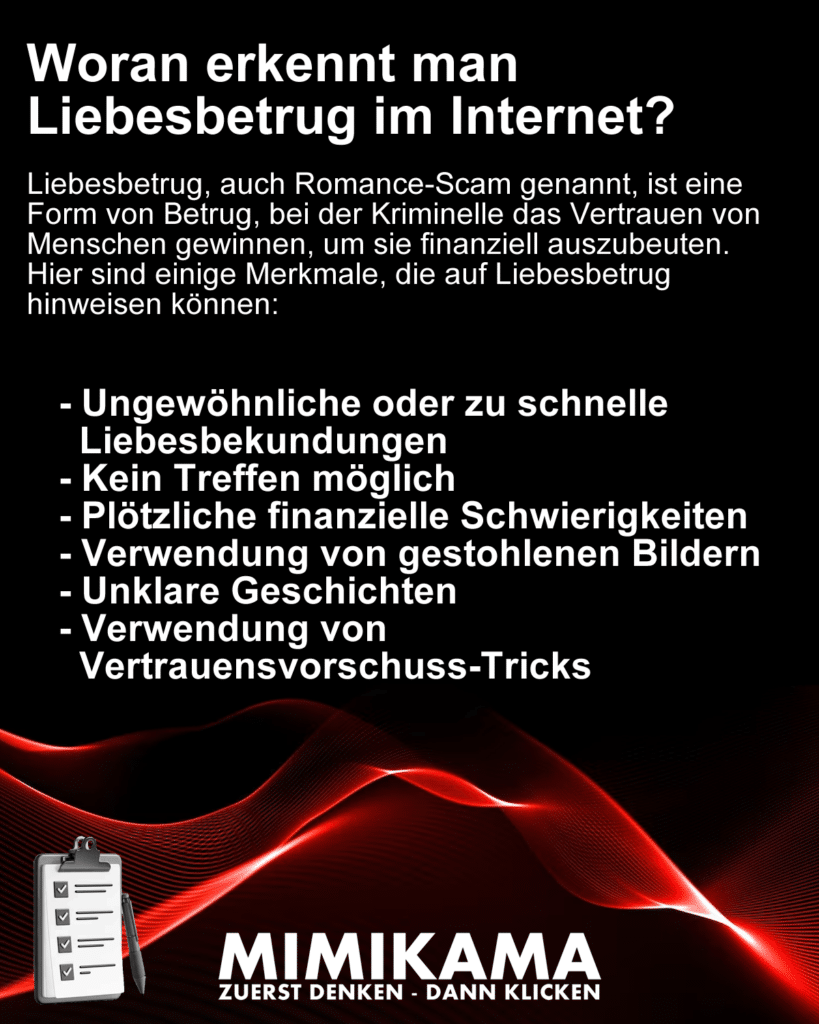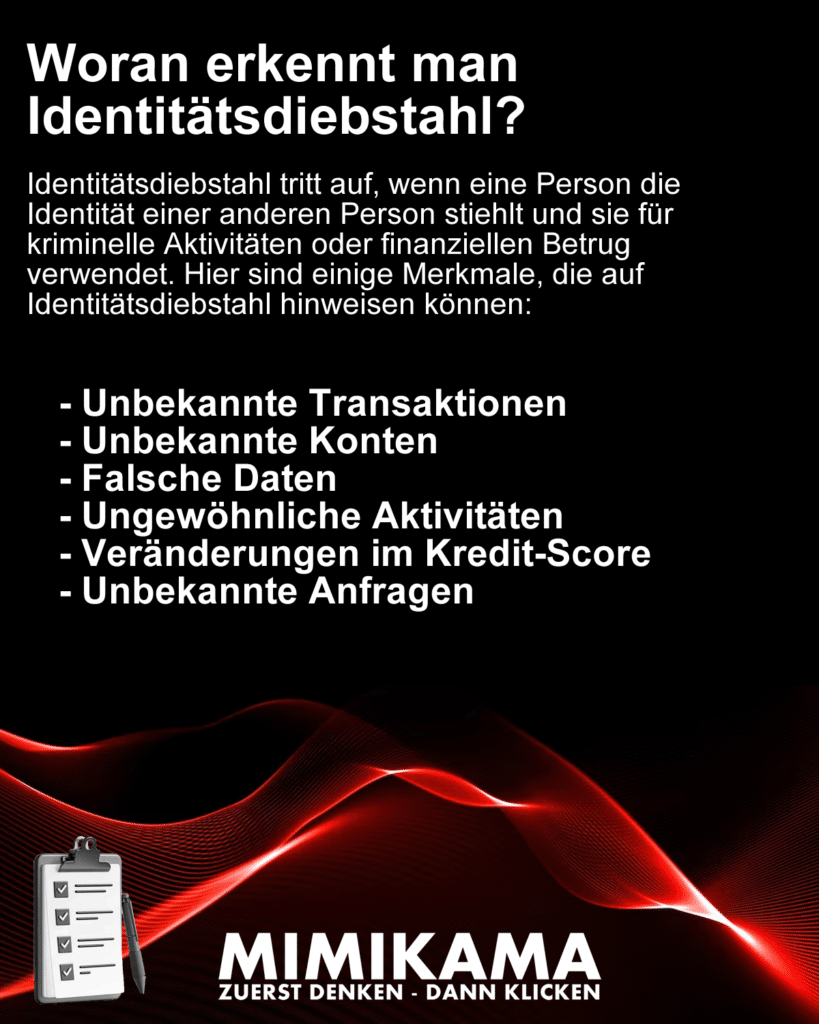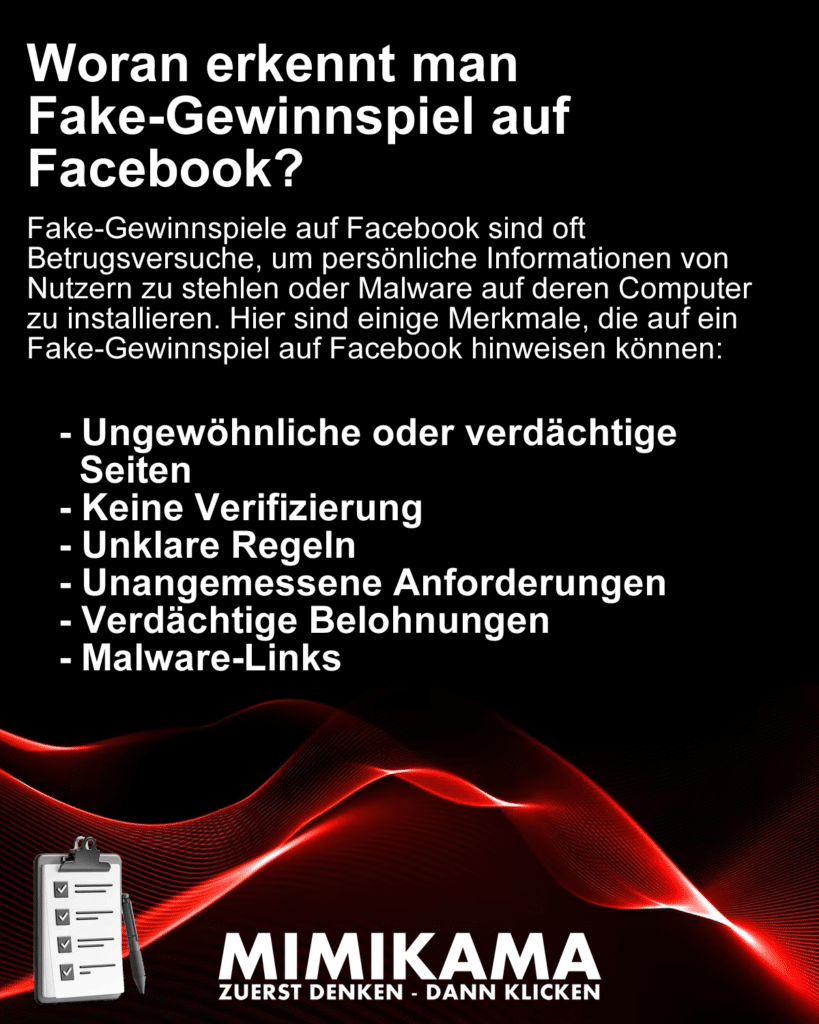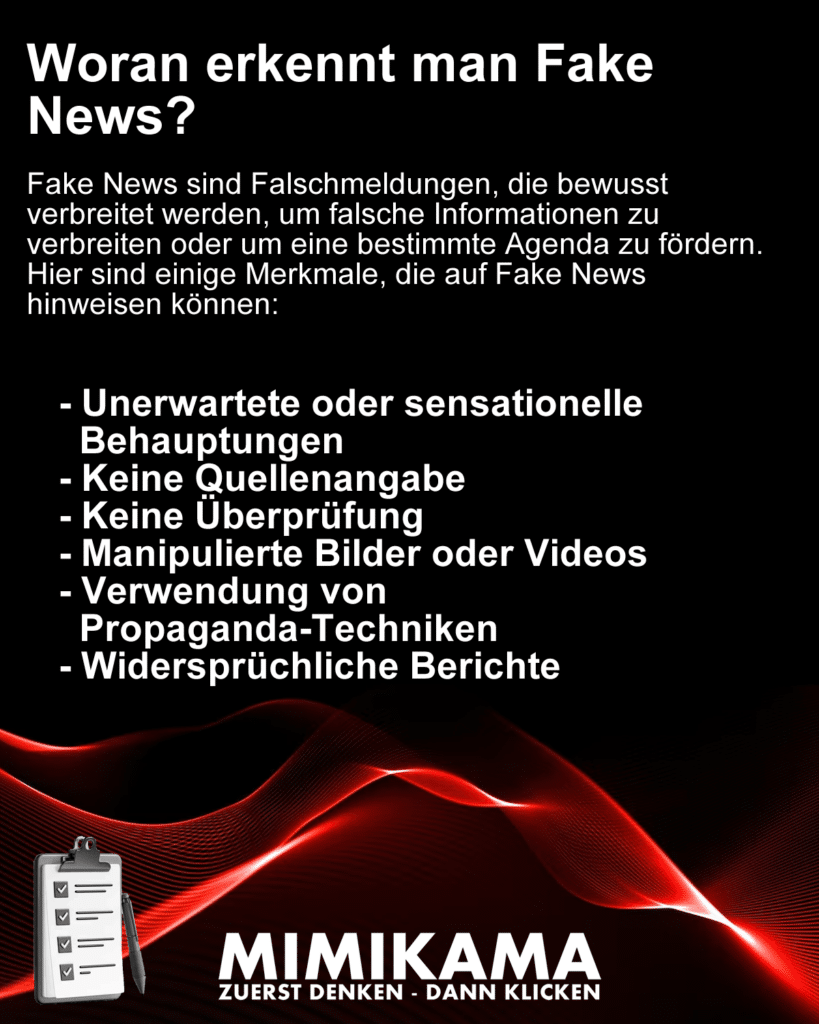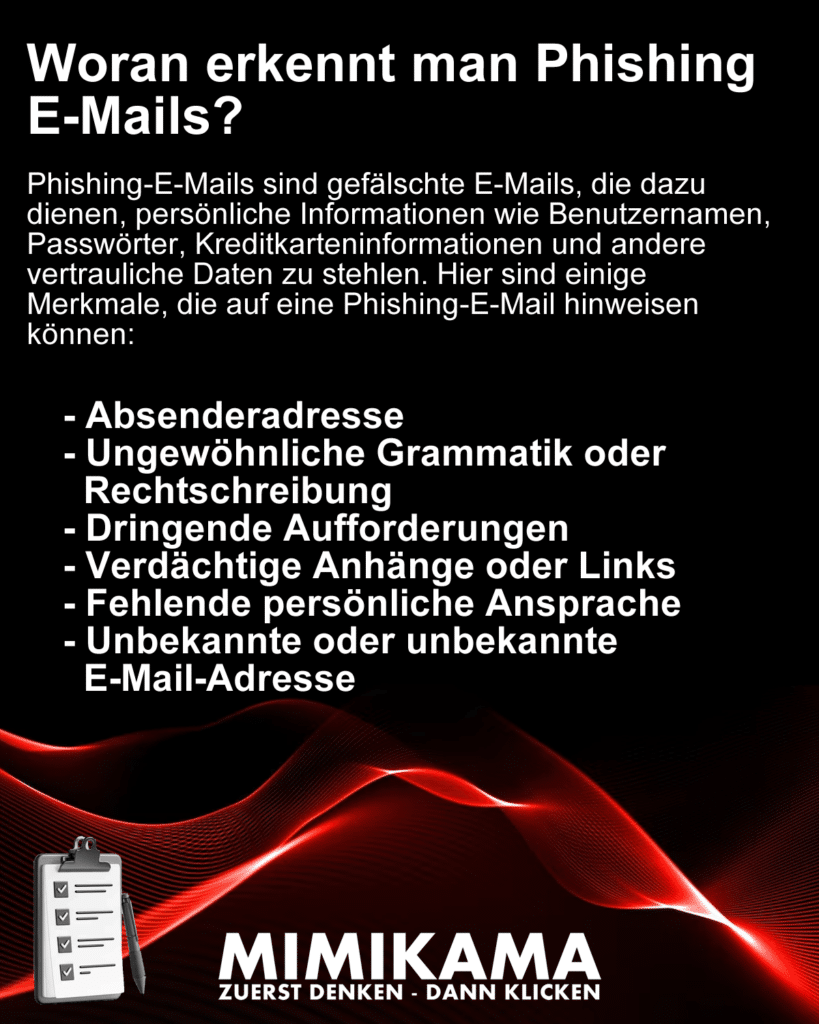Phishing emails, fake news, conspiracy theories, fake competitions on Facebook, identity theft, romance scams and trolls are various forms of online fraud and disinformation. Here are some signs to look out for:
How can you recognize phishing emails?
Phishing emails are fake emails designed to steal personal information such as usernames, passwords, credit card information, and other sensitive data. Here are some characteristics that may indicate a phishing email:
- From address : Phishing emails often have fake sender addresses that look like they come from a trusted source like a bank or online store.
- Unusual grammar or spelling : Phishing emails often contain grammatical or spelling errors or unusual expressions that are atypical of an official email.
- Urgent Requests : Phishing emails often contain urgent requests to get the recipient to act quickly before thinking about what happened.
- Suspicious attachments or links : Phishing emails may contain attachments or links that encourage the recipient to click a link or download a file that contains a virus or malware.
- Lack of personal approach : Phishing emails often use generic greetings such as “Dear Customer” instead of the recipient’s actual name.
- Unknown or unknown email address : Phishing emails can come from an email address you don't recognize or from an address that looks similar to a trusted source but is actually fake.
If you receive an email that contains one or more of these characteristics, you should exercise caution and research the source of the email before clicking on any links or providing any personal information.
Here you can find the current phishing warnings
How can you recognize fake news?
Fake news is false news that is deliberately spread to spread false information or promote a particular agenda. Here are some characteristics that can indicate fake news:
- Unexpected or sensational claims : Fake news often contains sensational or unexpected claims that may seem unbelievable at first glance.
- No attribution : Fake news often contains no attribution or only vague information that is difficult to verify.
- No Verification: Fake news is often spread without verification or research to promote a particular agenda.
- Manipulated images or videos : Fake news may also contain manipulated images or videos designed to support a particular story.
- Use of propaganda techniques : Fake news often uses propaganda techniques such as hype, exaggerations or defamation to manipulate readers.
- Conflicting reports : If there are multiple reports about a particular event and these reports are contradictory, it can be a sign of fake news.
Always remain critical and always check the sources of certain news before accepting it as true or forwarding it.
You can find the current fact checks here
How do you recognize a conspiracy theory?
A conspiracy theory is a theory that accuses a particular group or institution of making secret plans to deceive or manipulate the public. Here are some characteristics that may indicate a conspiracy theory:
- Dissenting opinions : A conspiracy theory often contradicts the official account of an event or situation.
- Lack of evidence : Conspiracy theories are often not supported by evidence or facts, but are based on rumors, conjecture or personal opinions.
- Complex Explanations : Conspiracy theories often offer complex explanations for simple events or situations that can usually be explained in simpler ways.
- Use of enemy images : Conspiracy theories often use enemy images to blame and stigmatize a group or institution.
- Unusual arguments : Conspiracy theories often use unusual arguments and unproven connections to support their claims.
- Use of Secret Knowledge : Conspiracy theories often claim to have access to secret knowledge or information that is kept hidden from the public.
Remember that not every alternative opinion or unsubstantiated claim is automatically a conspiracy theory. However, it is advisable to remain critical and check facts and evidence before accepting any theory or claim as true.
Also read: The psychology behind conspiracy theories: Why people believe in illogical explanations
How can you recognize a fake competition on Facebook?
Fake competitions on Facebook are often scams designed to steal users' personal information or install malware on their computers. Here are some characteristics that can indicate a fake competition on Facebook:
- Unusual or suspicious pages : The competition may have been posted on an unusual or unknown page that is not affiliated with the company or brand's official Facebook page.
- No Verification : The post or contest may not be verified by the company or brand's official Facebook page.
- Unclear Rules: The rules of the Sweepstakes may be unclear or incomprehensible, or there may be no specific details about how the winner will be determined.
- Unreasonable Requirements: The Sweepstakes may require the user to provide personal information such as email addresses, phone numbers or credit card details, which may be a sign of an attempted fraud.
- Suspicious Rewards : The Sweepstakes may offer unusually high or unlikely entry rewards designed to entice users.
- Malware Links : The Sweepstakes may contain links that result in malware being downloaded to the user's computer or lead to a phishing page to steal personal information.
We advise you to be careful with competitions on Facebook and only take part in those that come from verified sites and have clear rules and rewards. If a competition seems suspicious or has unreasonable requirements, it is best to avoid it and contact the company or brand's official Facebook page for more information.
Here you can find the current fake competition warnings
How do you recognize identity theft?
Identity theft occurs when a person steals another person's identity and uses it for criminal activity or financial fraud. Here are some characteristics that may indicate identity theft:
- Unknown transactions : If unknown transactions suddenly appear on your credit card statement or bank account, this could be an indication of identity theft.
- Unknown Accounts : If a loan or leasing company has rejected your application for an account, or an account has been set up that you don't know about, this could also indicate identity theft.
- False information : If a fraudster has used a fake identity to open an account or take out a loan, the false information can also be an indication of identity theft.
- Unusual activity : If you suddenly find yourself being contacted by debt collectors or receiving reminders for debts you don't know about, this could also indicate identity theft.
- Changes in credit score : If your credit score suddenly drops, it could indicate identity theft.
- Unknown Inquiries : If you receive inquiries about credit or loan applications that you did not submit, it could also be an indication of identity theft.
Check credit card and bank statements regularly and take immediate action if you notice signs of identity theft. You should contact your bank or credit card company and request that the affected account be blocked.
Also Read: Identity Theft: When Your Life Is In The Wrong Hands
How do I recognize love fraud?
Romance scams, also known as romance scams, are a form of fraud in which criminals gain people's trust in order to exploit them financially. Here are some characteristics that may indicate romance scams:
- Unusual or too quick displays of love : The scammer may make displays of love too quickly and too intensely to quickly gain the victim's trust.
- No meeting possible: The scammer may suggest meeting, but something always comes up or there are excuses why a meeting is not possible.
- Sudden Financial Difficulties : The scammer may suddenly face financial difficulties, such as a sudden illness or accident, and the victim asks for financial help.
- Use of Stolen Images : The scammer may use stolen images to create a false identity and impersonate another person.
- Unclear Stories : The impostor may tell stories that are unclear or incomplete, or may contradict themselves when repeating the same story.
- Using Lean-of-Faith Tricks : The scammer may use Lean-of-Faith tricks, such as a small request for money or to send a package to the victim, before asking for larger amounts.
Always be critical when meeting someone online. You should take time to get to know the person and check their authenticity and background. You should never give out personal or financial information or send money to someone you have never met. If you notice signs of romance fraud, you should end the relationship and inform the relevant authorities.
Also read: How to recognize love scammers on the Internet
How do I recognize a troll?
A troll is a person who intentionally posts provocative, offensive, or controversial comments or posts in an online forum, social media platform, or chat room in order to attract attention and annoy other users. Here are some characteristics that can indicate a troll:
- Provocation : Trolls intentionally provoke other users with offensive or controversial comments in order to provoke an emotional response.
- Inappropriate comments : Trolls often post inappropriate or offensive comments that have nothing to do with the topic of the post.
- Lack of Arguments : Trolls often do not offer arguments or evidence for their views or comments, instead attacking other users personally.
- Using Caps Lock: Trolls often use caps lock to write their comments, which can indicate that they are trying to get attention.
- Responding to provocation : Trolls often seek provocation and then respond to other users' emotional reactions to legitimize their actions.
- Pseudo-argumentation : Trolls can write argumentative comments that are neither valid nor relevant to the discussion.
Ignore trolls and don’t “feed” them by responding to their comments. Trolls seek attention and want to provoke, so you shouldn't play their games. However, if their comments are offensive or threatening, you should report them and, if necessary, block them.
Also read: Trolls on the Internet
>>> Follow us on Facebook
Media overview
Sharepics to download on the topics mentioned above
Notes:
1) This content reflects the current state of affairs at the time of publication. The reproduction of individual images, screenshots, embeds or video sequences serves to discuss the topic. 2) Individual contributions were created through the use of machine assistance and were carefully checked by the Mimikama editorial team before publication. ( Reason )


